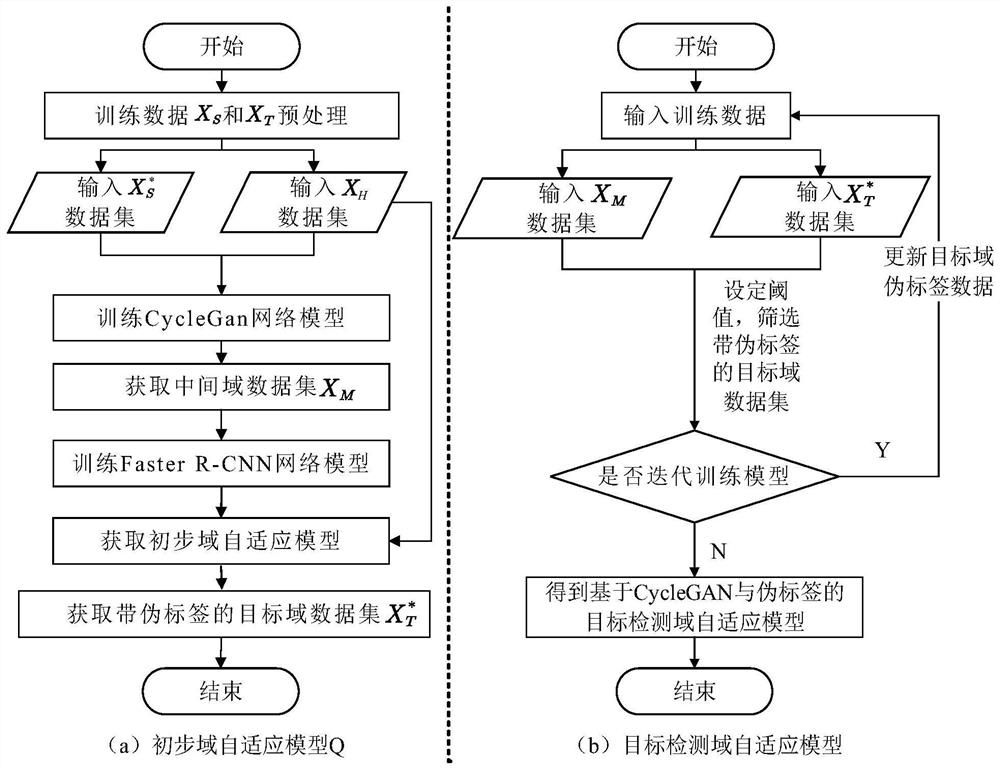A Construction Method of Target Detection Adaptive Model Based on Cyclegan and Pseudo-label
An adaptive model and target detection technology, applied in the field of deep learning, can solve problems such as target detection domain drift, achieve the effect of improving influence and solving domain drift
- Summary
- Abstract
- Description
- Claims
- Application Information
AI Technical Summary
Problems solved by technology
Method used
Image
Examples
Embodiment Construction
[0055] The features and performances of the present invention will be further described in detail below in conjunction with the embodiments.
[0056] like figure 1 As shown, a method for constructing an adaptive model for target detection based on CycleGAN and pseudo-labels in this embodiment includes:
[0057] S1, the source domain data set and the target domain data set are preprocessed, and the preprocessed source domain data set and the target domain data set are used to execute S2-S3;
[0058] S11, source domain dataset preprocessing:
[0059] The source domain dataset X containing label data S ={(s 1 , q 1 , a 1 ), (s 2 , q 2 , a 2 ),…,(s n , q n , a n )} to perform the size normalization operation to obtain the preprocessed source domain dataset where n is X S The number of image samples in s, s j stands for X S The jth image sample in , q j stands for X S The label data contained in the jth image sample in , a j stands for X S The position data cont...
PUM
 Login to View More
Login to View More Abstract
Description
Claims
Application Information
 Login to View More
Login to View More - R&D
- Intellectual Property
- Life Sciences
- Materials
- Tech Scout
- Unparalleled Data Quality
- Higher Quality Content
- 60% Fewer Hallucinations
Browse by: Latest US Patents, China's latest patents, Technical Efficacy Thesaurus, Application Domain, Technology Topic, Popular Technical Reports.
© 2025 PatSnap. All rights reserved.Legal|Privacy policy|Modern Slavery Act Transparency Statement|Sitemap|About US| Contact US: help@patsnap.com



